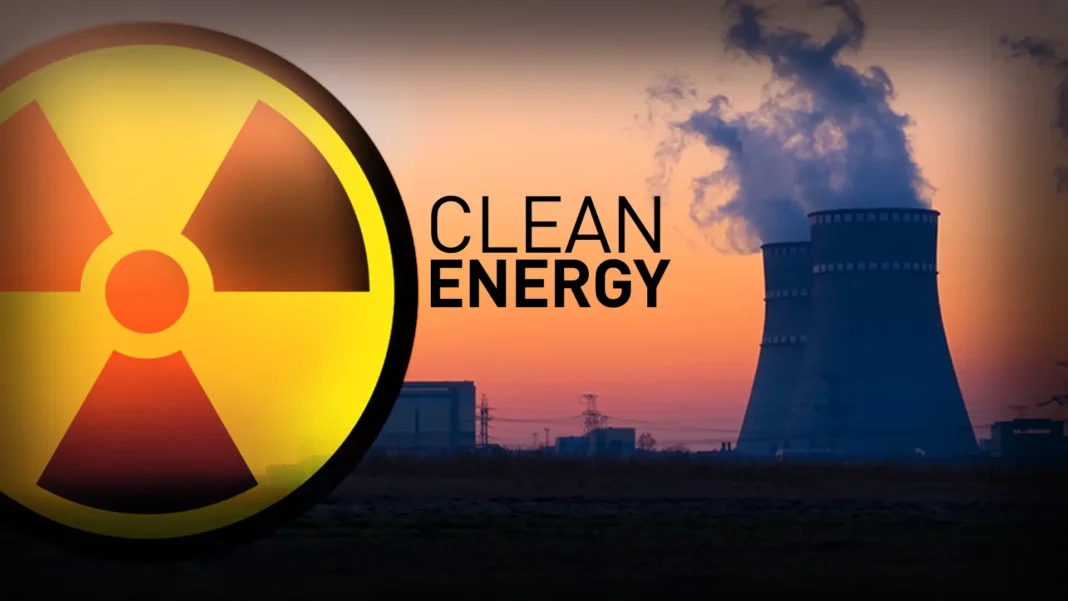Clean Energy meaning:
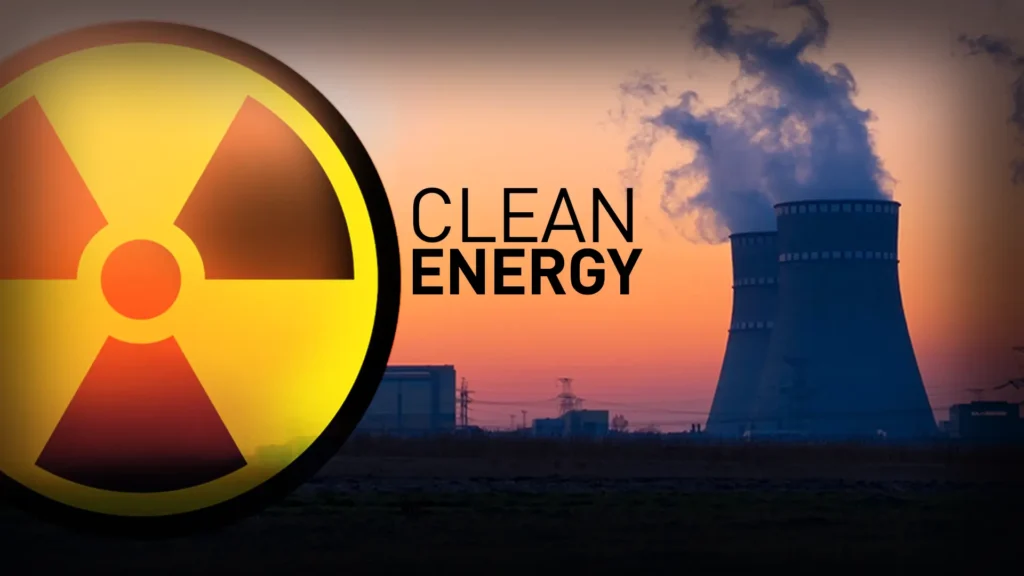
Clean energy is energy that comes from renewable, zero emission sources that do not pollute the atmosphere when used, as well as energy saved by energy efficiency measures.
Nuclear power is the second-largest source of low-carbon Emissions
Nuclear power is the second-largest source of low-carbon electricity today, with 452 operating reactors providing 2700 TWh of electricity in 2018, or 10% of global electricity supply.
Leading Nuclear power is “Russia,China and India” in Asia
In advanced economies, nuclear has long been the largest source of low-carbon electricity, providing 18% of supply in 2018. Yet nuclear is quickly losing ground. While 11.2 GW of new nuclear capacity was connected to power grids globally in 2018 – the highest total since 1990.
With nuclear power facing an uncertain future in many countries, the world risks a steep decline in its use in advanced economies that could result in billions of tonnes of additional carbon emissions. Some countries have opted out of nuclear power in light of concerns about safety and other issues. Many others, however, still see a role for nuclear in their energy transitions but are not doing enough to meet their goals.
The publication of the IEA’s first report addressing nuclear power in nearly two decades brings this important topic back into the global energy debate.
Definition of clean energy
Clean energy comes from generation systems that do not produce any kind of pollution, notably greenhouse gases like Co2, which cause climate change. Therefore, clean energy – in full development – drives advances to conserve the environment and palliate the crisis with non-renewable fuels, such as gas and oil.
Differences between clean and renewable energy sources
Clean energy and renewable energy are two concepts that are bundled together, but they are not the same thing and it is important to understand the difference. The first difference is the pollution they cause. You may not realize that renewable energies can cause pollution.
For example, biogas and biodiesel are renewable sources of energy because, among other things, they come from natural, inexhaustible sources. However, unlike most renewable energies, they pollute the atmosphere on combustion, emitting greenhouse gases.
Clean energies do not pollute and, therefore, it is fair to say that most renewable sources of energy are also clean and vice versa.
| Pros | Cons |
|---|---|
| Reduces international dependence on fossil fuel-rich nations | Limited storage capabilities |
| Creates job opportunities | Geographic limitations |
| Benefits public health | Isn’t always 100% carbon-free |
| Reduces energy prices | Requires a lot of space |
What is nuclear energy:
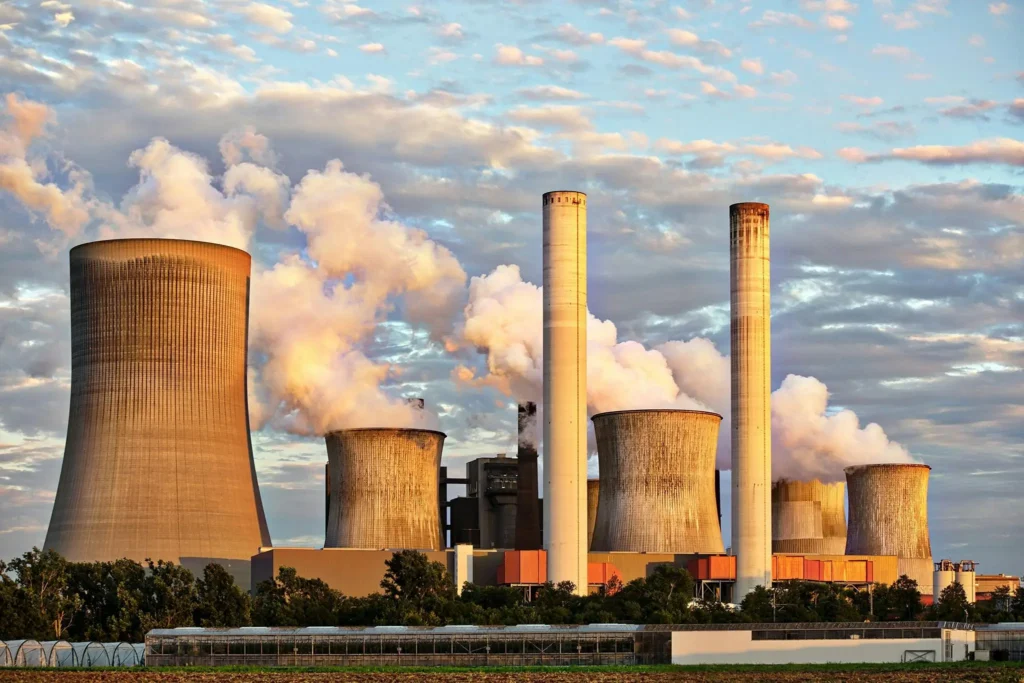
What is nuclear energy:
The power of the atom has been at the heart of electricity generation for more than half a century. Now nuclear fission – the process by which nuclear energy is used to generate electricity – looks set to support the future of clean, net zero energy systems globally.
Nuclear energy has been part of the global energy mix since nuclear reactors first started producing power in the early 1950s. From its heyday in the 1960s to the late 1980s, nuclear power’s popularity has risen and fallen – and has often been a source of controversy.
Nuclear Meaning:
Nuclear energy is a form of energy released from the nucleus, the core of atoms, made up of protons and neutrons. This source of energy can be produced in two ways: fission – when nuclei of atoms split into several parts – or fusion – when nuclei fuse together
Two types of nuclear energy:
Fission and fusion are two physical processes that produce massive amounts of energy from atoms. They yield millions of times more energy than other sources through nuclear reactions.
What is nuclear fission?
Nuclear fission is a reaction where the nucleus of an atom splits into two or more smaller nuclei, while releasing energy.
For instance, when hit by a neutron, the nucleus of an atom of uranium-235 splits into two smaller nuclei, for example a barium nucleus and a krypton nucleus and two or three neutrons. These extra neutrons will hit other surrounding uranium-235 atoms, which will also split and generate additional neutrons in a multiplying effect, thus generating a chain reaction in a fraction of a second.
What is Nuclear Fusion?
Nuclear fusion is the process by which two light atomic nuclei combine to form a single heavier one while releasing massive amounts of energy.
Fusion reactions take place in a state of matter called plasma — a hot, charged gas made of positive ions and free-moving electrons with unique properties distinct from solids, liquids or gases.
The sun, along with all other stars, is powered by this reaction. To fuse in our sun, nuclei need to collide with each other at extremely high temperatures, around ten million degrees Celsius. The high temperature provides them with enough energy to overcome their mutual electrical repulsion. Once the nuclei come within a very close range of each other, the attractive nuclear force between them will outweigh the electrical repulsion and allow them to fuse. For this to happen, the nuclei must be confined within a small space to increase the chances of collision. In the sun, the extreme pressure produced by its immense gravity creates the conditions for fusion.
How does a nuclear power plant work?
Inside nuclear power plants, nuclear reactors and their equipment contain and control the chain reactions, most commonly fuelled by uranium-235, to produce heat through fission. The heat warms the reactor’s cooling agent, typically water, to produce steam. The steam is then channelled to spin turbines, activating an electric generator to create low-carbon electricity.
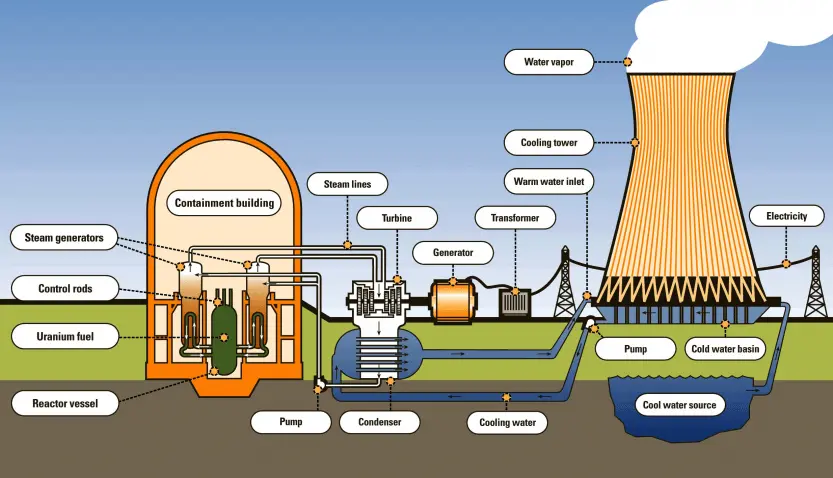
Why are the scientists studying fusion energy?
Ever since the theory of nuclear fusion was understood in the 1930s, scientists — and increasingly also engineers — have been on a quest to recreate and harness it. That is because if nuclear fusion can be replicated on earth at an industrial scale, it could provide virtually limitless clean, safe, and affordable energy to meet the world’s demand.
Fusion could generate four times more energy per kilogram of fuel than fission (used in nuclear power plants) and nearly four million times more energy than burning oil or coal.
Most of the fusion reactor concepts under development will use a mixture of deuterium and tritium — hydrogen atoms that contain extra neutrons. In theory, with just a few grams of these reactants, it is possible to produce a terajoule of energy, which is approximately the energy one person in a developed country needs over sixty years.
Fusion fuel:
Fusion fuel is plentiful and easily accessible: deuterium can be extracted inexpensively from seawater, and tritium can potentially be produced from the reaction of fusion generated neutrons with naturally abundant lithium. These fuel supplies would last for millions of years. Future fusion reactors are also intrinsically safe and are not expected to produce high activity or long-lived nuclear waste. Furthermore, as the fusion process is difficult to start and maintain, there is no risk of a runaway reaction and meltdown; fusion can only occur under strict operational conditions, outside of which (in the case of an accident or system failure, for example), the plasma will naturally terminate, lose its energy very quickly and extinguish before any sustained damage is done to the reactor.
Importantly, nuclear fusion — just like fission — does not emit carbon dioxide or other greenhouse gases into the atmosphere, so it could be a long-term source of low-carbon electricity from the second half of this century onwards.
Hotter than the sun
While the sun’s massive gravitational force naturally induces fusion, without that force a temperature even higher than in the sun is needed for the reaction to take place. On Earth, we need temperatures of over 100 million degrees Celsius to make deuterium and tritium fuse, while regulating pressure and magnetic forces at the same time, for a stable confinement of the plasma and to maintain the fusion reaction long enough to produce more energy than what was required to start the reaction.
While conditions that are very close to those required in a fusion reactor are now routinely achieved in experiments, improved confinement properties and stability of the plasma are still needed to maintain the reaction and produce energy in a sustained manner. Scientists and engineers from all over the world continue to develop and test new materials and design new technologies to achieve net fusion energy.
Where do we stand on fusion technology development?
Nuclear fusion and plasma physics research are carried out in more than 50 countries, and recently researchers have finally achieved scientific energy gain in a fusion experiment for the first time. Experts have come up with different designs and magnet-based machines in which fusion takes place, like stellarators and tokamaks, but also approaches that rely on lasers, linear devices and advanced fuels.
How long it will take for fusion energy to be successfully rolled out will depend on mobilizing resources through global partnerships and collaboration, and on how fast the industry will be able to develop, validate and qualify emerging fusion technologies. Another important issue is to develop in parallel the necessary nuclear infrastructure, such as the requirements, standards, and good practices, relevant to the realisation of this future energy source.
What is the role of the IAEA?
The IAEA has a long history of being at the core of international fusion research and development, and recently started supporting early technology development and deployment
- The IAEA launched the Nuclear Fusion journal in 1960 to exchange information about advances in nuclear fusion. The journal is now considered the leading periodical in the field. The IAEA also regularly publishes TECDOCs and outreach and educational material on fusion.
- The first international IAEA Fusion Energy Conference was held in 1961 and, since 1974, the IAEA convenes a conference every two years to foster discussion on developments and achievements in the field. See a short film about the history of this conference series Since 1971, the IAEA International Fusion Research Council has served as a catalyst for establishing improved international collaboration in fusion research.
- The ITER Agreement is deposited with the IAEA Director General. Collaboration between the IAEA and the ITER Organization is formalized through a cooperation agreement in 2008, which was expanded and deepened in 2019.
- The IAEA facilitates international cooperation and coordination on DEMO programme activities around the world.
- The IAEA implements a series of technical meetings and coordinated research activities on topics relevant to fusion science and technology development and deployment, and organizes and supports education and training activities on fusion.
- The IAEA maintains numerical databases of fundamental data for fusion energy research, as well as the Fusion Device Information System (FusDIS), which compiles information on fusion devices operating, under construction or being planned around the world.
- The IAEA is carrying out a project on synergies in technology development between nuclear fission and fusion for energy production, and on the long-term sustainability – including the handling of radioactive waste – and legal and institutional issues for fusion facilities.
- The IAEA is investigating key safety aspects covering the whole lifecycle of fusion facilities, where guidelines and specific reference documents are needed.
- The IAEA is supporting a pre-feasibility study of a generic fusion demonstration plant.
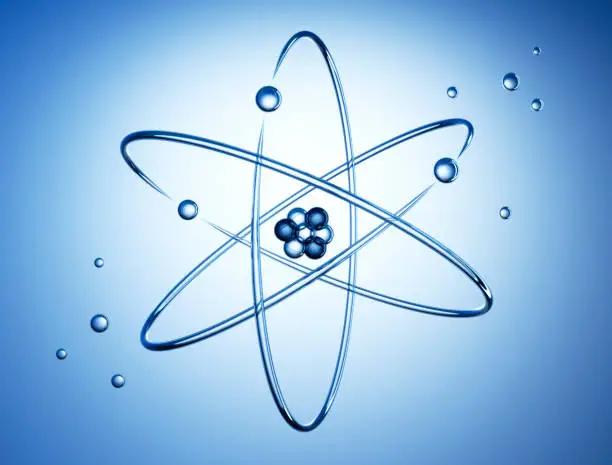
How does nuclear energy work?
Nuclear power stations work in a very similar way to coal- and gas-fired power stations, but the science behind the nuclear production process is much more advanced.
In a nuclear reactor, a reaction is driven by the splitting of atoms – a process called nuclear fission – where a particle is fired at an atom to split it into two smaller atoms (and some additional neutrons). The neutrons released hit other atoms, causing them to divide and release more neutrons. This is called a chain reaction and the whole process creates masses of heat.
A nuclear reactor then transfers this heat energy to water, turning it into pressurised steam. This steam is then released through turbines, turning the steam’s heat energy into kinetic energy that turns electrical generators to produce electricity.
What are the benefits of nuclear energy?
Unlike many renewable energy sources, power from nuclear energy can be generated 24 hours a day and isn’t dependent on the weather, like wind and solar power tend to be.
Because of this, nuclear power is more readily available to meet energy demands, which helps to lower the carbon intensity of the electricity supply during times when other renewable energy sources might not be as readily available.
Some new-generation nuclear power stations are now certified for 80 years of operation – far longer than a gas- or coal-fired power stations and many renewable installations. But the lifespan of a nuclear power plant also depends on its financial viability, which considers such items as operating revenue, operating and maintenance expense, decommissioning costs and storage costs of depleted fuel and other materials.
Is nuclear energy clean?
Nuclear energy is sometimes referred to as a clean energy technology as it produces nearly zero carbon dioxide or other greenhouse gas emissions. Nuclear energy also avoids producing air pollutants that are often associated with burning fossil fuels for energy.
However, concerns remain around what to do with spent fuel from reactors, as there’s still no definitive way to dispose of it indefinitely without risk.
The history of nuclear power generation includes several accidental releases of radioactive steam, making headlines and receiving well-deserved focus and reason for concern. But nuclear safety has made great strides in recent decades stemming from increased regulation and improved technologies and processes.
Is nuclear energy renewable?
Nuclear fuels, such as the element uranium, are not considered renewable as they are a finite material mined from the ground and can only be found in certain locations. But nuclear power stations use a miniscule amount of fuel to generate the same amount of electricity that a coal or gas power station would (for example, 1 kg of uranium contains the same amount of energy as 2.7 million kg of coal), so nuclear fueld is considered to be a reliable source of energy for decades to come.
What is the future of nuclear electricity generation?
As the UK and US aim for net zero by 2050, the mix of electricity generation will change. Nuclear energy is likely to play a role globally in helping nuclear-capable nations achieve these goals.
In the UK, the construction of Hinkley Point C in Somerset has marked the current government’s intention to have nuclear as a pillar of its energy mix. Sizewell C – a sister plant to the active B station – is currently under consultation, with a proposed generation of 3.2GW. As of 2021 in the US, there are plans to ‘uprate’ existing reactors to increase their generation capacity, while two new reactors in Vogtle, Georgia, came online in 2023.
Small modular reactors
The future may also see the introduction of Small Modular Reactors (SMRs). These are smaller version of nuclear power plants, similar to those that power nuclear submarines and ships.
While SMRs’ power output is substantially less than a full-scale nuclear power station (they generate as little as a fifth of current-generation reactors), they can be more easily manufactured and transported to where they’re needed, before being dismantled and returned at the end of their operating life.
SMRs also have safety benefits as they’re inherently simpler than large reactors and rely, primarily, on passive systems to shut down instead of human intervention.




